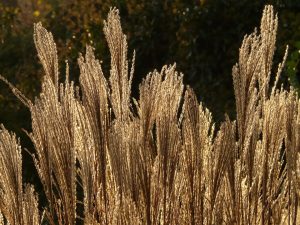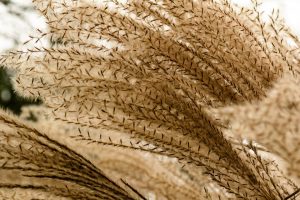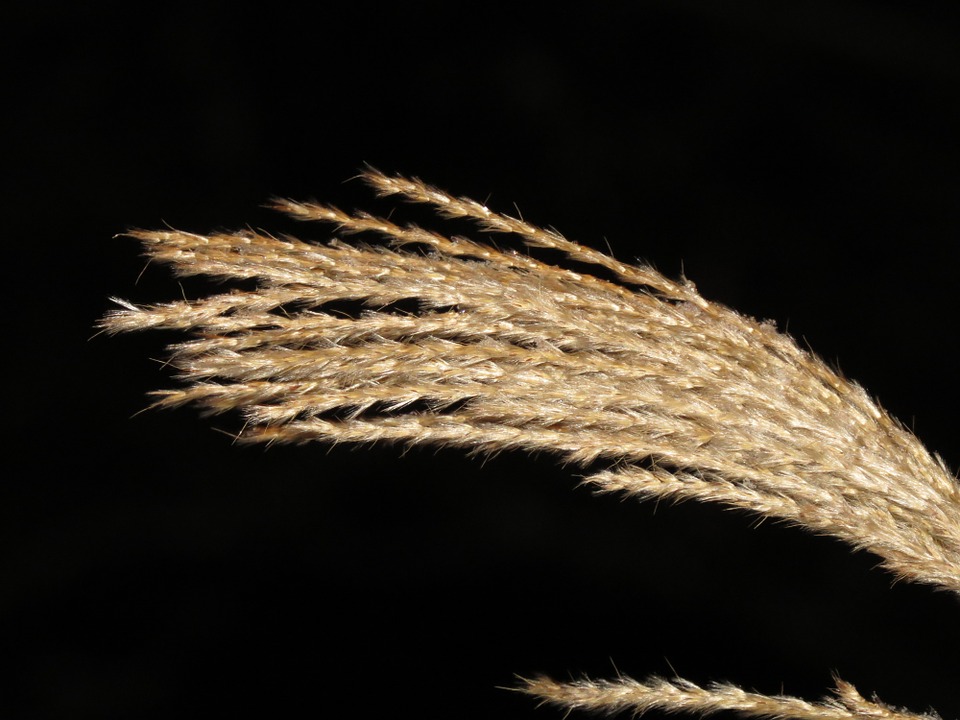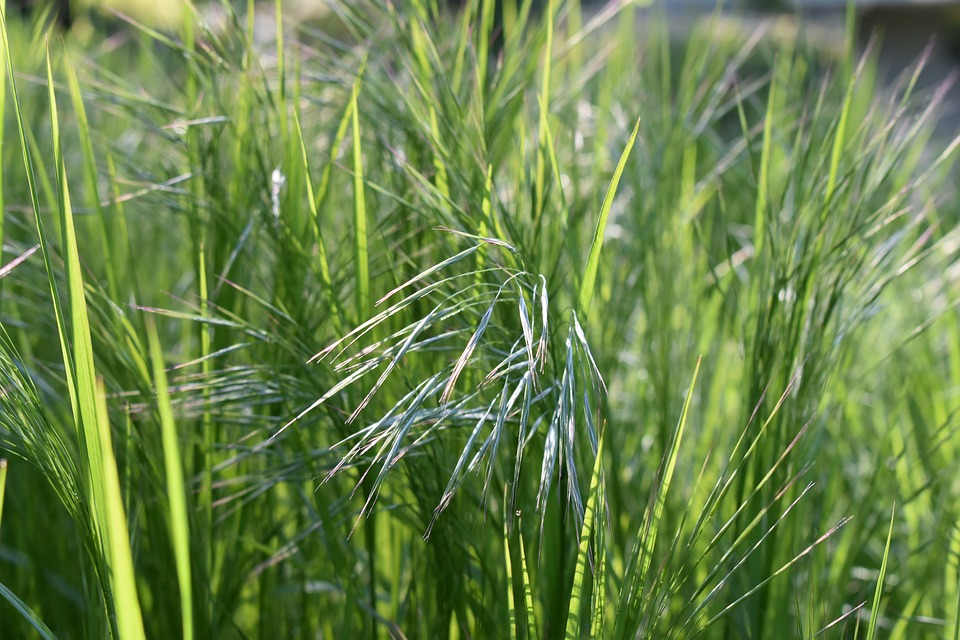Culture
The grass grows easily in medium moisture, average, well-drained soil in part shade to full sun. It is tolerant of a broad range of various soils that range from well-drained sandy soil to those heavy clays that are prominent in the St. Louis area. Does the best in full sun. Prefer moist soil. When it gets too much shade it is less vigorous with reduced flowering and tends to flop around too much. Tolerant of humidity and summer heat. Clumps expand in circumference slowly by short rhizomes. However, they have a tendency to maintain a tight clumped shape. For crown protection and visual interest, the foliage should be allowed to stand throughout the winter. In later winter, right before the new shoots start to appear the foliage should be cut near to the ground. Divide the crown to propagate. The grass reseeds up to the point of it being somewhat invasive within the milder areas of its overall growing range. Much can help to prevent reseeding from occurring.
Noteworthy Characteristics

Commonly referred to as Japanese silver grass, Chinese silver grass, or Eulalia grass, Miscanthus Sinensis is a warm-season, clump-forming grass that tends to grow 3 to 7 feet tall. It is native to the lower alpine areas and lowlands of China, Korea, and Japan. It has escaped from gardens and is naturalized in more than 25 states in the Eastern and Central U.S. states that are east of the Mississippi River along with several western States which include California and Colorado.
The grass has a dense clump of leaves and stems that arch upward and give it a fountain-like, rounded appearance. Its linear leaves (3/8-inch wide and 3 to 4 feet long) have silvery to whitish midribs, serrate margins, and tapered tips. Its foliage frequently turns attractive shades of orange to yellow by mid-fall and then fades gradually to beige-tan for the winter. Red to pink flowers in loose, whisk-like, feathery terminal panicles (8 to 10 inches long) and bloom over the foliage starting in late August and lasting to October. Gradually the flower panicles start to turn beige in the middle of the fall as the seeds begin to mature. The foliage and flower panicles both retain ornamental interest, beige color, and good arching shape throughout the winter. Their attractiveness is often enhanced with a covering of newly fallen snow.
Miscanthus Sinensis can spread fairly invasively throughout the landscape, especially in some of its growing range’s milder areas. Often it will spread initially into disturbed sites like woodland margins, railroad right-of-ways, and roadsides. The species has significant invasive potential but is not as much of a concern for many ornamental cultivars, with some of them being sterile.
Its Genus name is direct from the Greek words of miskos, which means stem, and anthos, which means flower, which refers to its stalked spikelets.
The grass was formerly part of the Eulalia genus but was reclassified subsequently to the Miscanthus genus with many gardeners still calling it by one its of its common names of Eulalia grass.

‘Gracillimus’, which is also called maiden grass, is well-known for its green narrow leaves that have a silver midrib that forms an arching, rounded, and a substantial clump of foliage that tends to grow 4 to 6 feet tall (and up to 8 feet tall when it is in flower). After a frost, the foliage turns yellow but fades to straw-beige quickly by the winter. In late September, reddish-copper tiny flowers appear in tassel-shaped inflorescences over the foliage, which turns gradually into white silvery plumes as the seeds start to mature. It blooms at a later time than a majority of Miscanthus cultivar. Good winter interest is provided since the flower plumes continue to persist deep into the winter. Gracillimus’ is a very popular and old cultivar.
Problems
There are no frequently occurring disease or insect problems. In certain parts of the United States, miscanthus blight and miscanthus mealybug are starting to become major problems. Stunted growth is caused by Miscanthus mealybug and it is hard to eradicate since it lives inside of the stems of the grass. Miscanthus blight is a type of fungal disease that attacks the sheaths and blades. Leaf rust can occur as well.
Mature ‘Gracillimus’ clumps (3 to 5 years or older) produce substantial foliage that may need support at times.
Uses in the Garden
Versatile type of ornamental grass. Small grouping, specimen, or accent. Naturalized areas, cottage gardens, wild gardens, meadows, borders, or water/pond peripheries of gardens. Dried flowers are long-lasting.
Type: Ornamental grass
Common Name: Eulalia
Family: Poaceae
Spread: 3 to 6 feet
Height: 4 to 7 feet
Zone: 5 to 9
Bloom Description: Copper maturing through to silver
Bloom Time: August through February
Sun: Part shade to full sun
Maintenance: Low
Water: Medium
Leaf: Good Fall, Colourful
Flower: Showy, Good Dried, Good Cut
Other: Winter Interest
Attracts: Birds
Tolerate: Dry Soil, Erosion, Drought, Air Pollution, Black Walnut



